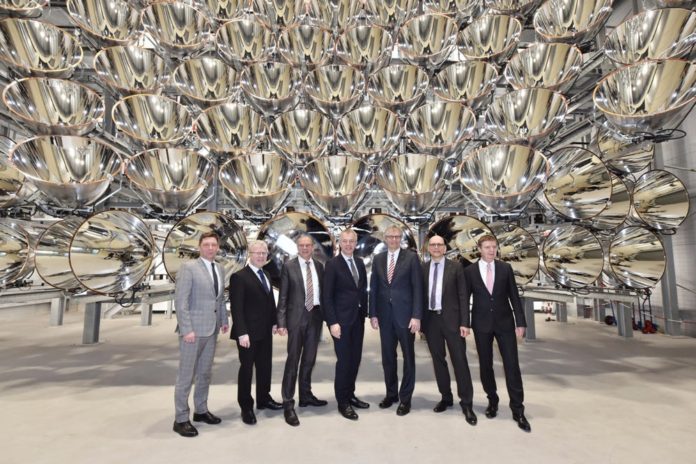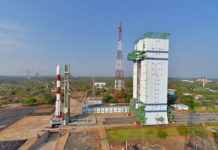Since climate change and global warming became one of the world’s most concerning problems, scientists have always been looking for ways to make clean, renewable energy. Research conducted early in March of this year by the University of Cambridge yielded a way to produce more clean hydrogen fuel from sunlight. As if on cue, a project in Germany has unveiled an invention complementary to the discovered system of mass production of hydrogen fuel- the greatest source of solar energy in the world yet.
The Synlight
Synlight, the artificial lighting system, was designed by scientists at the German Aerospace Center (DLR), Jülich. The primary idea behind the creation of the Synlight was for researchers to find a method of concentrating solar radiation for the maximum production of hydrogen fuel from water vapor.
The team of researchers behind the study based their model on previous ideas used in the working of solar stations. In the plants, mirrors are utilized to concentrate sunlight on water present on these sites. Heat concentration causes the water to evaporate and accumulate over time. Vapor build-up within turbines forces the turbines to turn, and in the process, this kinetic energy is converted to generate electricity.
The Synlight works on the same guiding principle. Made up of one hundred and forty-nine film projector lights, the Synlight can produce its solar energy instead of harvesting that of the sun. This ‘artificial sun’ produces up to four thousand times more wattage than the regular light bulb will use and gives off enormous amounts of heat energy- about 3500 degrees Celsius, estimated to be ten thousand times hotter than harvested solar radiation. It produces so much heat, in fact, that Professor Bernard Hoffschmidt, research director to the project, told The Guardian that it could ‘burn a person alive if he or she stepped into the room while the Synlight was on.’
With this Synlight innovation, tomorrow looks brighter for those who value green energy. Renewable clean energy could be used to power vehicles and airplanes shortly when the solar energy being produced by inventions such as the Synlight is harvested effectively and used efficiently. “We will need billions of tons of carbon-free fuel in the future to power automobiles. Therefore we must innovate to keep up with the rate of climate change,” Hoffschmidt also remarked.
Because the Sunlight produces a lot of heat energy, there is a possibility that it will be utilized in testing the impact of solar radiation on the resilience of space equipment and rocket travel parts. Synlight could help scientists go off-world and discover distant galaxies.
The Downside
Giving off extreme amounts of energy may make the Synlight attractive as an energy source, but it also makes it dangerous to human life. The research team at the DLR is containing this problem, however, by sealing the ‘artificial sun’ in a radiation chamber.
Additionally, the Synlight consumes enough power to run a four-person household for an entire year- so just imagine the cost of keeping it functional!




